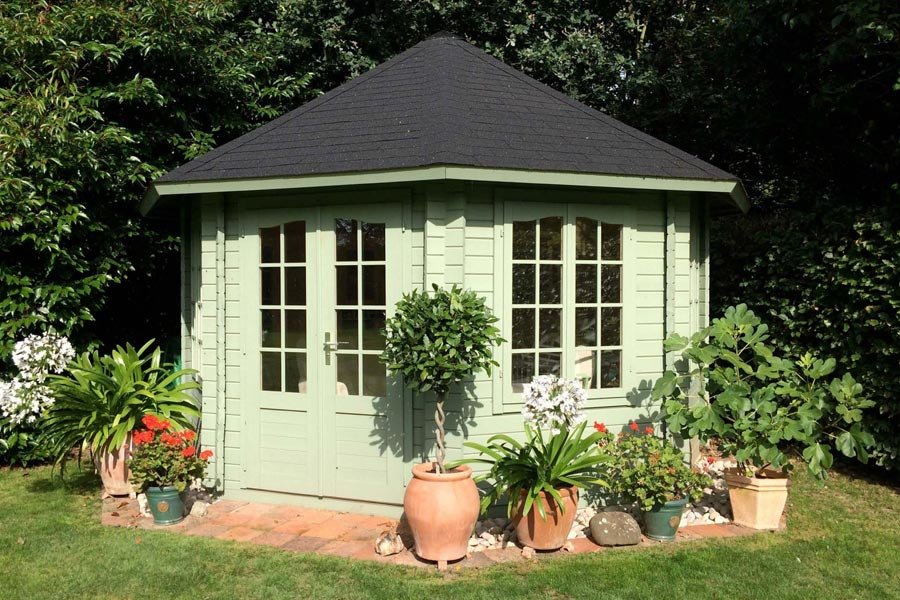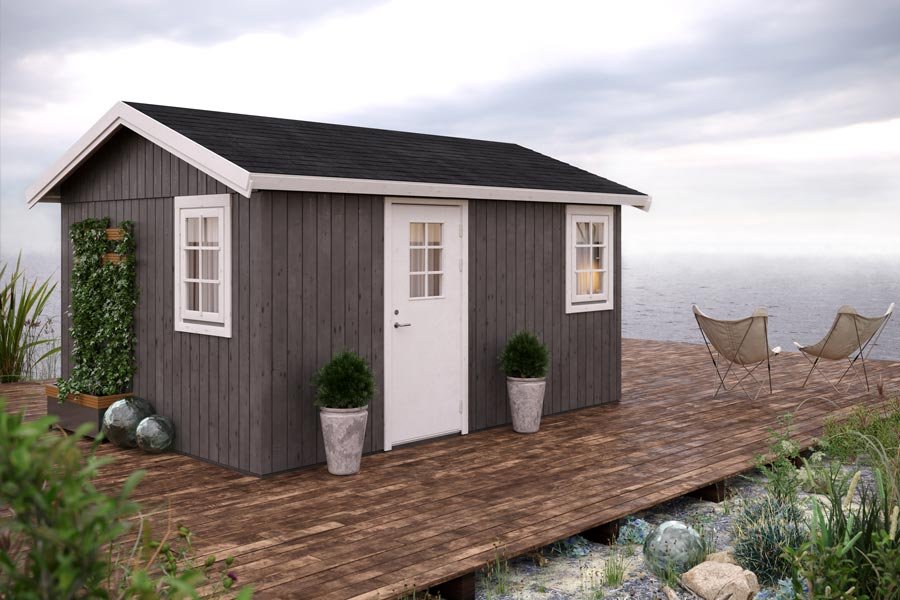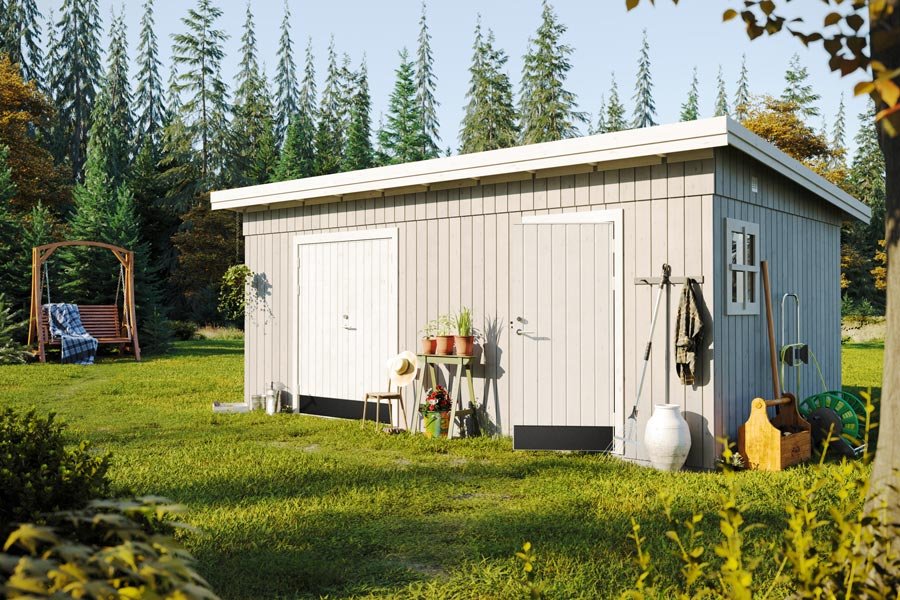Five ways to make a timber garden building warmer in winter
Winter’s not exactly the time for garden living or relaxing in the summerhouse, especially this year with howling gales and torrential rain. But unlike old-style Edwardian summerhouses, many of today’s timber garden buildings are suitable for all-year round use. Here are five ways to make a timber garden building warmer in winter.
1. The walls
Timber garden buildings come in many log thicknesses. Many of the timber garden cabins on the market have relatively thin walls: 19 mm or 28 mm. This keeps the price down, and is suitable for spring/summer use and storage. If you want to work in a garden room or use it in all our seasons, look at higher timber thickness, such as 44 mm or 70 mm. Slow-grown timber is denser too, providing extra insulation.
Many customers ask GardenLife staff about insulating the walls of their cabins. On DIY forums, you’ll see plenty of chat about using plasterboard, foil roll and other materials to line the walls. In fact, with most GardenLife timber buildings, we don’t recommend this. First, it shouldn’t be necessary if you use a good timber thickness. Secondly, it is usual (and a good thing) for timber logs to swell slightly (by, say, 1mm) in damp weather. Nailing panels along the walls can interfere with this very natural process.
However, GardenLife also offer some contemporary cabin designs, based on modular pre-assembled wall elements. It is straightforward to add wall insulation to all these designs.
2. The roof
If you’re going to use a timber cabin all day in winter, it may be worthwhile adding extra roof insulation. This will keep down heating costs. One option is to incorporate extra insulation when you build the cabin. Companies such as Celotex and Kingspan make good-quality and affordable roofing insulation and plasterboard, which are easy to install during construction. This extra insulation is available as an optional extra if you have GardenLife’s fitters erect your cabin.
The other option is to add roof insulation to an existing cabin. For example, you can fit Celotex thermal insulation boards in between the roof purlins, nailing them onto timber beading on the purlins. It’s also possible to line the entire roof area with thermal insulation boards (i.e. covering the purlins). However, this reduces the interior height in the cabin, and it’s also a shame to cover up the purlins if they’re attractive finished wood.
3. The floor
It’s also possible to install extra insulation under the floor when you build a timber cabin. Again, Celotex and Kingspan make effective and affordable insulation materials for floors. Obviously, this option is more difficult on an existing building.
4. The location
If you’ve not already erected a garden summerhouse or cabin, then think about where you position it. When you plan the aspect of a timber garden building, it’s easy to fall into the trap of thinking only about summer use – warm days and fine sunsets. Obviously, these things are important, but turn your thoughts to winter too: which spots in the garden will get some winter sun? And could using trees, trellis, hedges or walls as windbreaks reduce the impact of cold winds?
And one more practical point on garden layout. When you’ve had a week of November rain, you don’t want to walk across the boggiest part of the garden to reach your garden office. So think about paths and making your short ‘commute’ to the office a dry and pleasant one with a gravel path, paving stones or raised decking.
5. The interior
Design ideas such as rugs and carpets can also do much to reduce draughts and heat loss. And there are plenty of affordable and portable heaters to keep you warm outside. As a lot of interior styling ties in with improving insulation we’ll be posting a more detailed article on this topic in the near future.
So there we are – if you’re planning a purchase or you already have a summerhouse, garden office or log cabin, hopefully some of the above tips on ways to make a timber garden building warmer will help you out! As usual, if you have any questions about GardenLife products please don’t hesitate to get in touch.
















